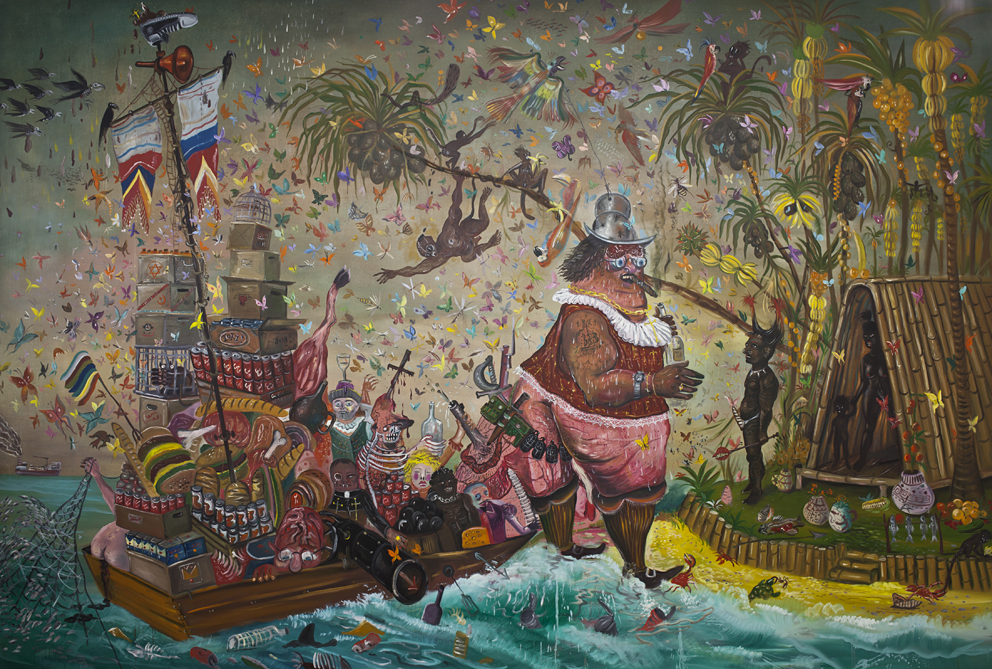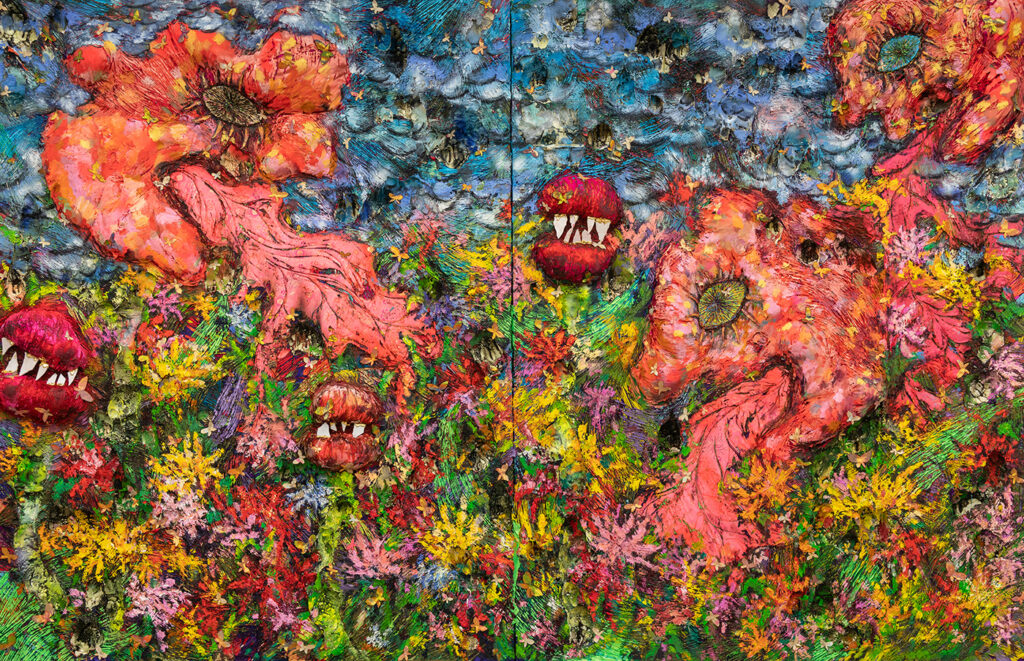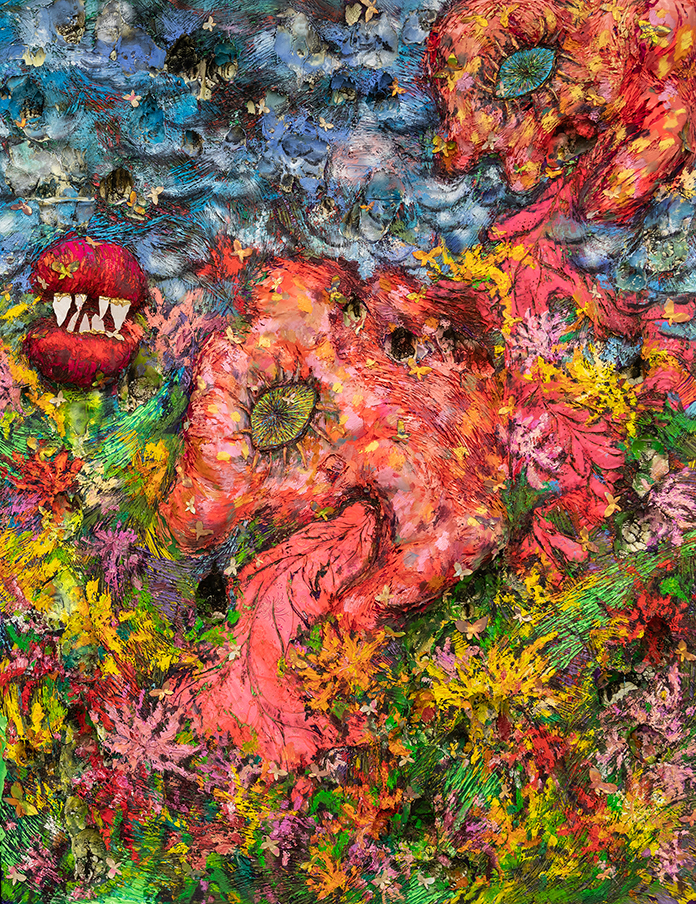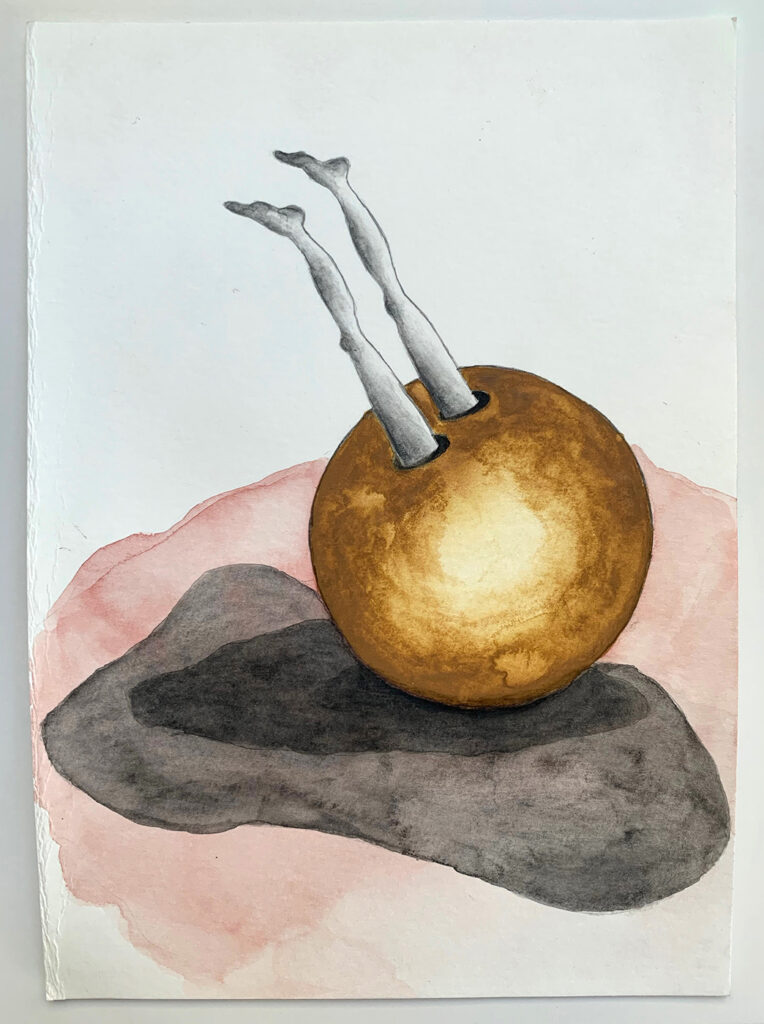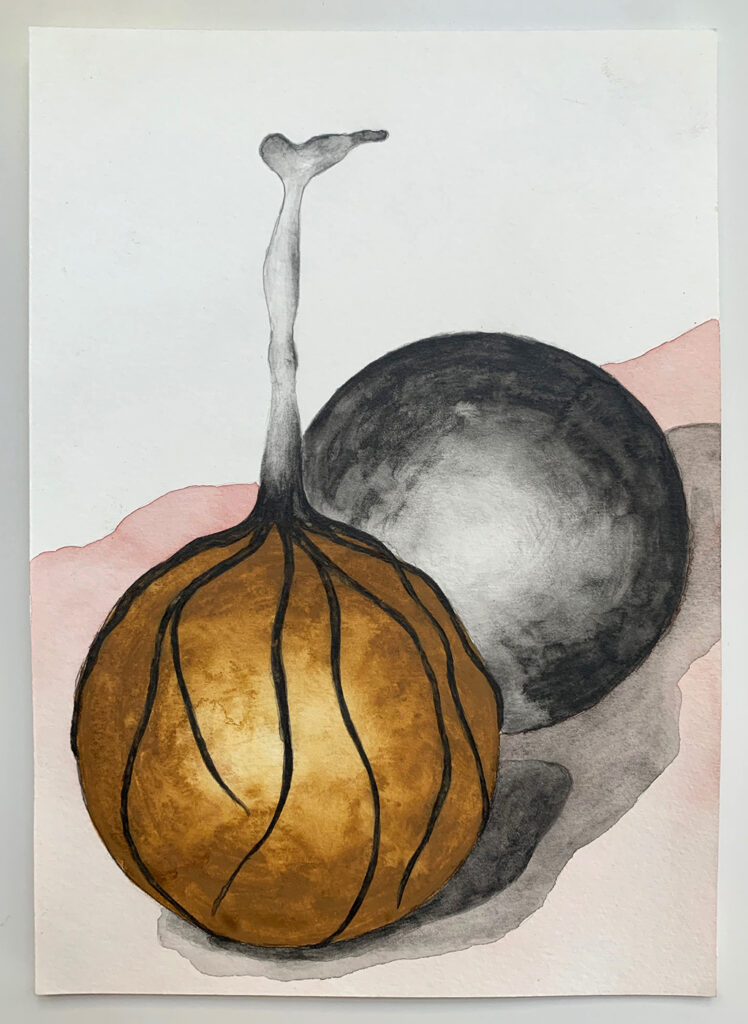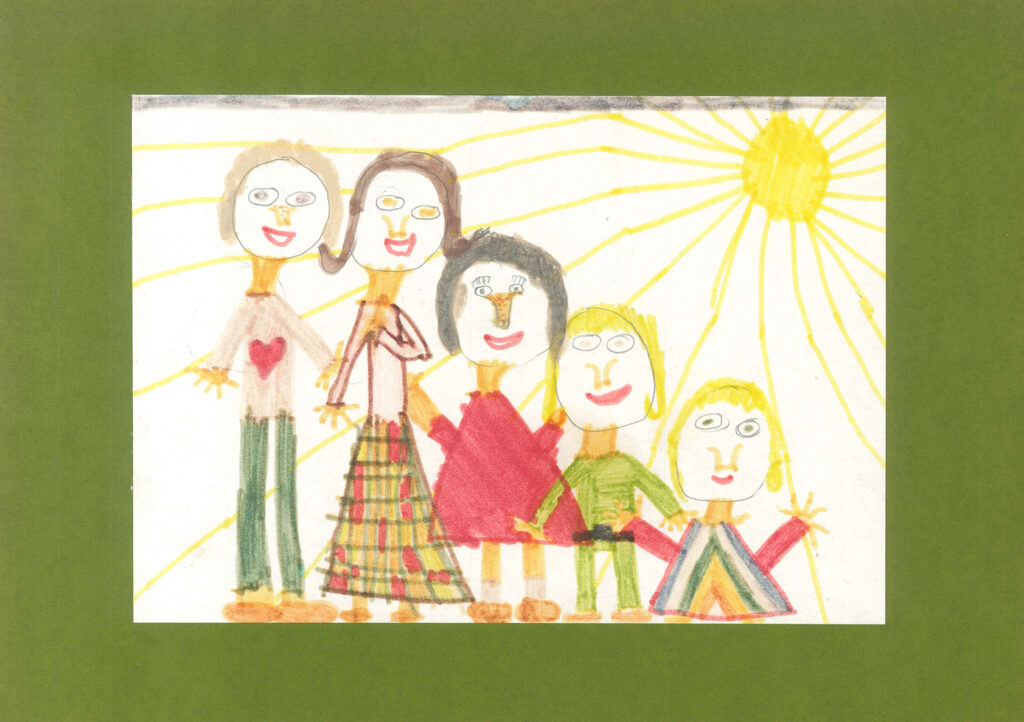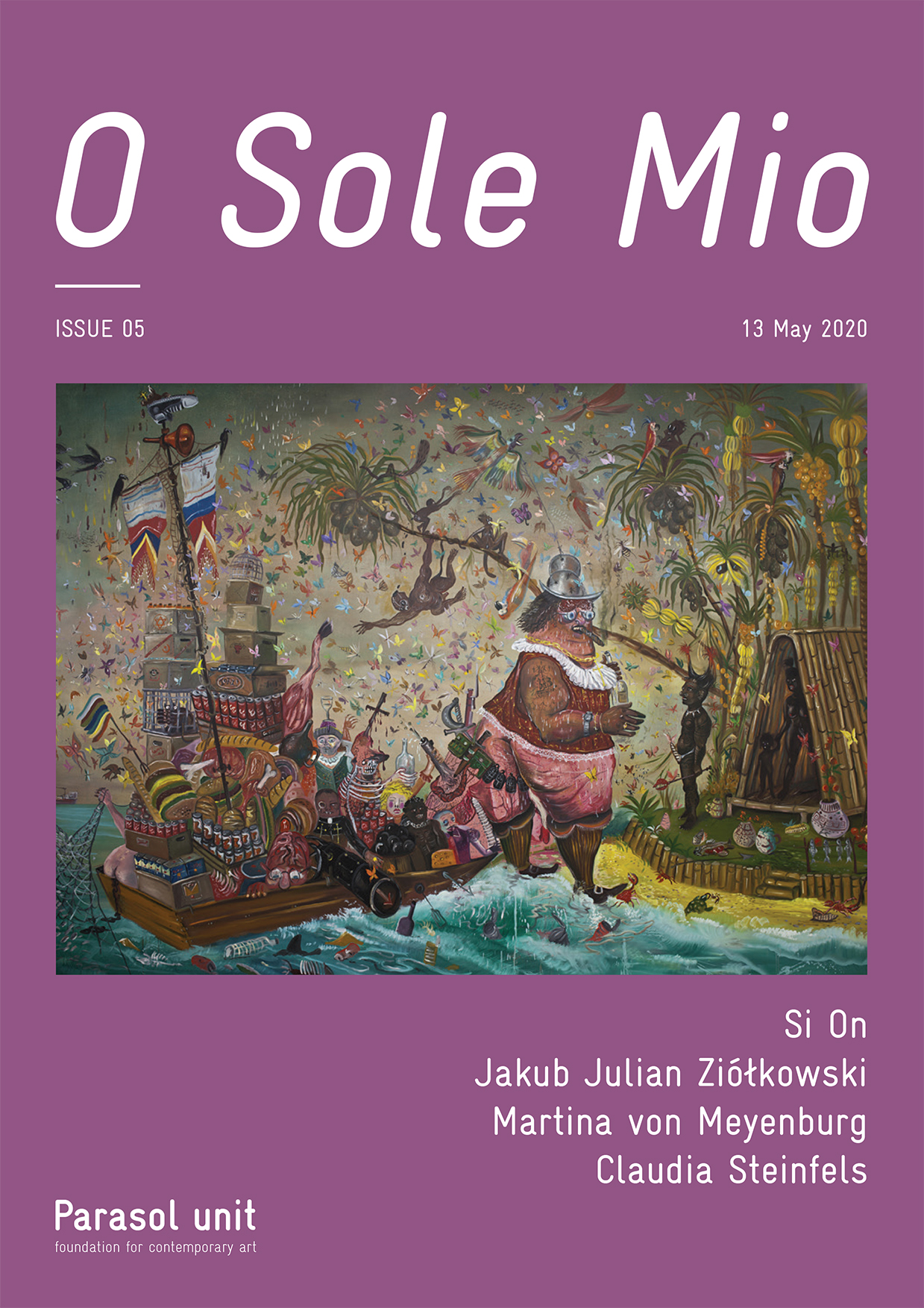As We Face Up to the Unknown
This fifth issue of O Sole Mio is devoted to some intriguing pictorial works. Whether they were executed by established artists or by the hand of a child, someone now grown up, they are essentially recollections and thoughts processed through time in unique ways that bring the cerebral and visceral into dialogue.
Recently, when I again came face to face with Conquista, the fabulously intriguing painting by Jakub Julian Ziółkowski, I could not help but see it as analogous to the current state of the world in the grip of the Covid-19 pandemic. At first glance, one might see the evil conqueror depicted in Conquista as a magnified coronavirus. But alas, and on the contrary, it could actually represent the uncontrolled and somewhat irresponsible development of our global system prior to the pandemic, which may indeed have allowed free rein to our current foe, Covid-19.
Conquista is a very large painting, 230 x 240 cm (90½ x 94½ in). Art-historically speaking, it has three parts. The right side represents everything that could mean a positive and pleasant state of life and mind, such as light, peace, innocence, contentment, harmony, plenitude and goodwill; while the left side, which seems to come into forceful confrontation with the right side, embodies all the opposites: darkness, rain, violence, oppression, evil, beleaguering, greed and excess. The centre is significant and reveals, in a stunning turn of events, the transition from good to bad. Dominating this space is a gigantic figure, seemingly a ruthless conqueror, who embodies many undesirable attributes. Close behind the obese man comes a boat overloaded with a bunch of lamentable people and all sorts of baggage and boxes of merchandise. Overhead, we recognise the first sign of aggression within this otherwise eternal paradise, a monkey with markedly long canines hanging off a bent coconut palm to grab hold of a skinned animal leg protruding from the jumble of objects stacked up on the boat.
The scene could have looked like a paradise were it not for this horrible carousel of disparate objects and people. The environment itself is bountiful, luscious with tropical vegetation, turquoise water, a golden sandy beach and countless colourful butterflies. But the peace and happiness here has been interrupted by the unwelcome arrival of the conqueror and his retinue. The beauty and freshness of this painting collides overwhelmingly with feelings of fright and shock. The peaceful indigenous family depicted on the right-hand side of the canvas look utterly dismayed. A fearful young mother stands in the family’s simple shelter holding their child’s hand, while the father has stepped out to face up to the unknown. The image of David and Goliath comes to mind but with far greater intensity and multiplicity. In this realm of excess and possible orgy, this pristine environment seems destined for pollution and destruction.
Ziółkowski’s paintings have never been short on expression but in Conquista the potential for horror and injustice is laid bare. The artist’s brush and subject matter come together from a mind and gut that are rich with empathy. As we face the unknown, this challenging painting sets the tone for this issue, which builds on our thoughts in Issue 04 about seeing the bigger picture. In that issue, works by Sonja Braas and Navid Nuur, and a reflection by Philippe Davet all reminded us to stay alert to what is happening, not only literally but also and, above all, metaphorically, so as to recognise and act upon foreseeable dangers.


